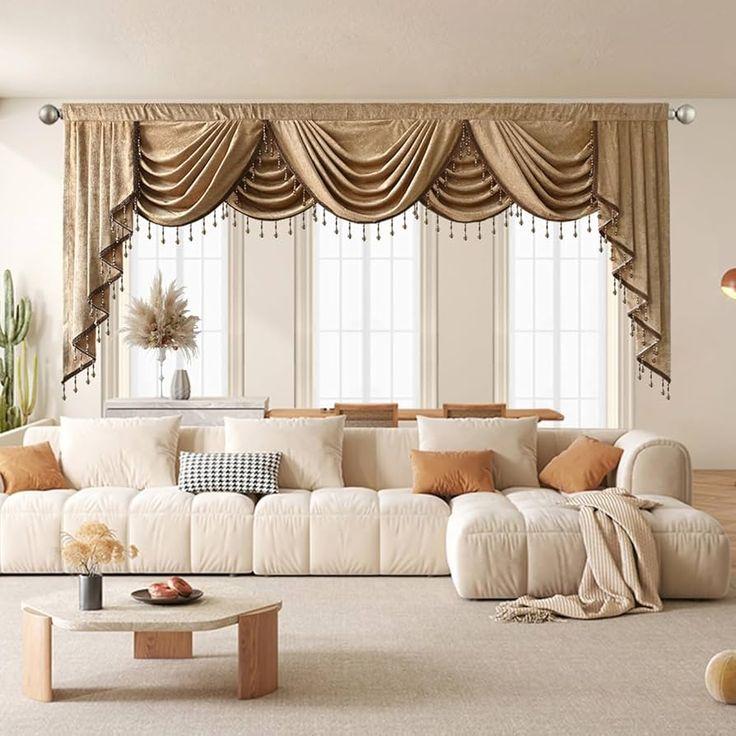Embracing Sustainability with Natural Curtain Fabrics

In the era of eco-conscious living, home décor is undergoing a green transformation. One of the most impactful changes? A rising demand for natural curtain materials. Beyond aesthetics, these fabrics reflect a commitment to sustainability, health, and mindful consumerism.
Let’s explore how natural curtain fabrics are shaping a more eco-friendly future in interior design.
🌿 Why Choose Natural Materials?
Natural fibers—like linen, cotton, hemp, bamboo, and even silk—are gaining popularity for several reasons:
-
Biodegradability: These materials break down naturally at the end of their life cycle.
-
Lower carbon footprint: Often require less energy to produce than synthetic counterparts.
-
Non-toxic: Free from harmful chemicals found in many synthetic curtain coatings.
-
Breathability: Promote healthier indoor air by allowing natural airflow.
By opting for natural curtains, you're not just styling your home—you’re making an ethical and environmentally responsible decision.
🧵 Top Sustainable Natural Curtain Fabrics
-
Linen
Derived from the flax plant, linen is durable, breathable, and naturally antimicrobial. Its textured appearance adds elegance and softness to minimalist or rustic interiors. -
Organic Cotton
Grown without pesticides or synthetic fertilizers, organic cotton is soft, versatile, and widely available. It’s perfect for light-filtering curtains in bedrooms or nurseries. -
Hemp
A powerhouse of sustainability, hemp grows quickly, needs little water, and resists pests. It produces strong, durable fabric ideal for casual and modern interiors. -
Bamboo
Bamboo-based textiles are incredibly soft and naturally resistant to bacteria. Although some bamboo processing can be chemically intensive, newer closed-loop methods are making it cleaner. -
Peace Silk (Ahimsa Silk)
Unlike conventional silk, peace silk allows silkworms to live out their life cycle. This ethical alternative suits luxury curtains with a conscience.
🌎 The Rise of Eco-Conscious Manufacturing
It’s not just the fabrics that matter—the processes behind curtain production are equally important.
-
Natural dyes are replacing synthetic ones to avoid water pollution.
-
Fair trade practices are supporting artisans and farmers.
-
Zero-waste production is becoming a standard for eco-luxury brands.
Many companies now offer full traceability, so you can verify how your curtains were made and by whom.
🏠 Styling with Purpose
Natural curtains blend effortlessly into various interior themes:
-
Scandinavian & Japandi: Linen and cotton fit perfectly with neutral, pared-down spaces.
-
Bohemian: Hemp and bamboo with earthy tones and organic weaves.
-
Modern minimalist: Crisp cottons or textured flax for clean lines and soft contrasts.
Sustainability is no longer a trend—it’s a lifestyle. And with today’s options, you don’t have to compromise on design.
Conclusion
Natural curtain materials offer a meaningful way to reduce environmental impact while enhancing the beauty and comfort of your home. From organic cotton to eco-friendly hemp, these sustainable solutions align style with responsibility.
🛒 Explore eco-friendly curtain collections today at hugmoomcurtain.com
SEO Title: Sustainable Trends in Natural Curtain Fabrics
Meta Description: Discover how natural materials like linen, cotton, and hemp are shaping the future of eco-friendly curtains. Make sustainable, stylish choices for your home.
- Art
- Causes
- Crafts
- Dance
- Drinks
- Film
- Fitness
- Food
- Spiele
- Gardening
- Health
- Startseite
- Literature
- Music
- Networking
- Andere
- Party
- Religion
- Shopping
- Sports
- Theater
- Wellness



